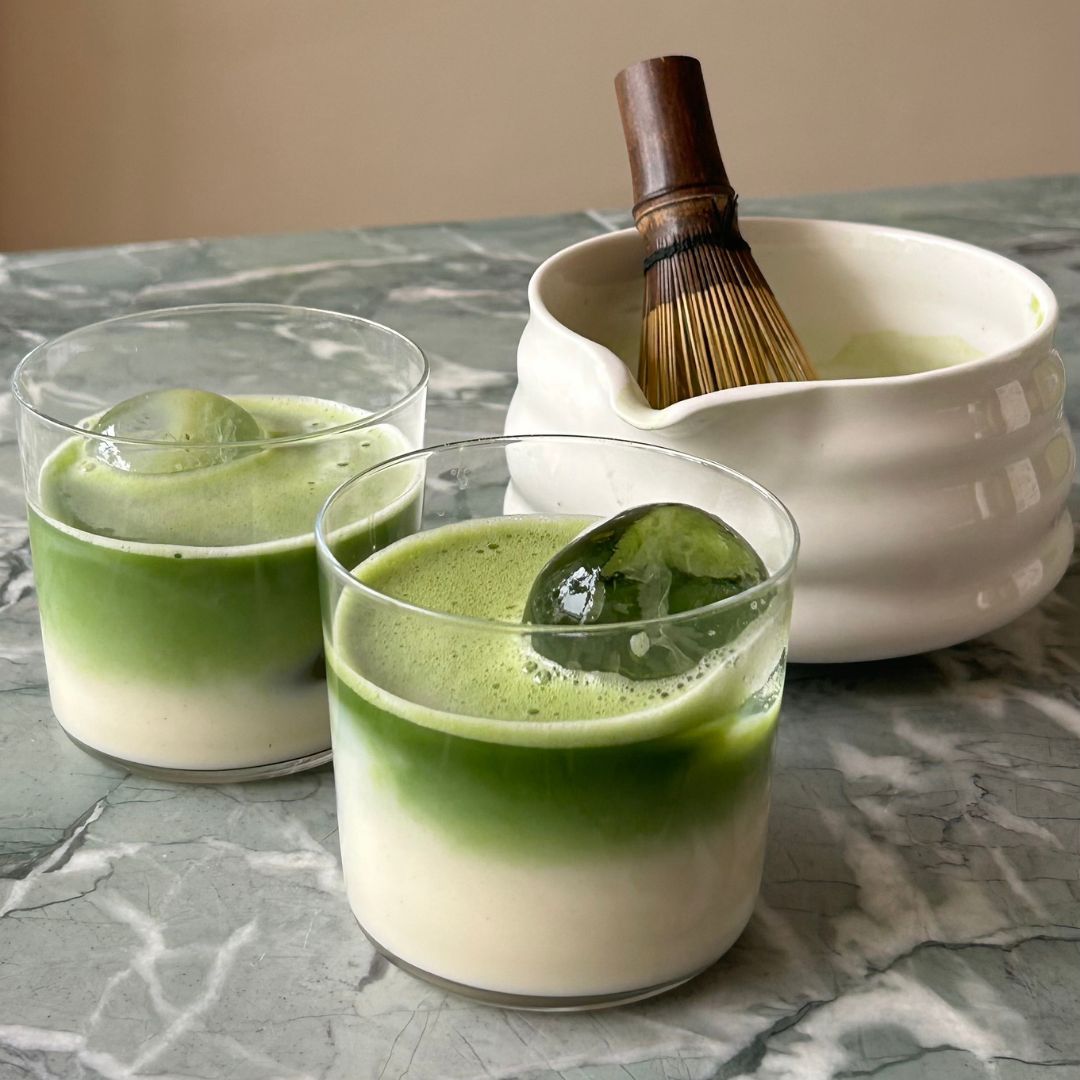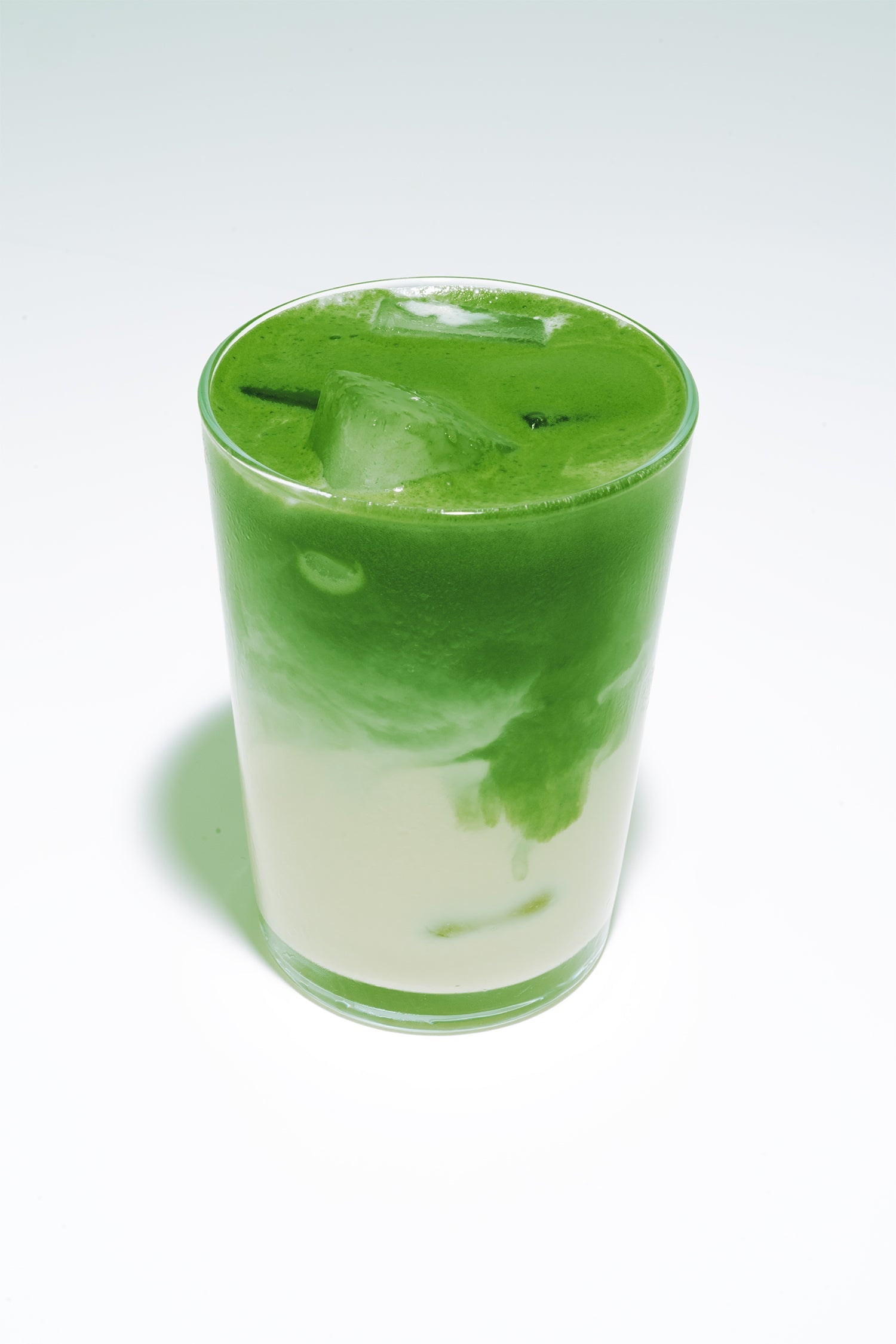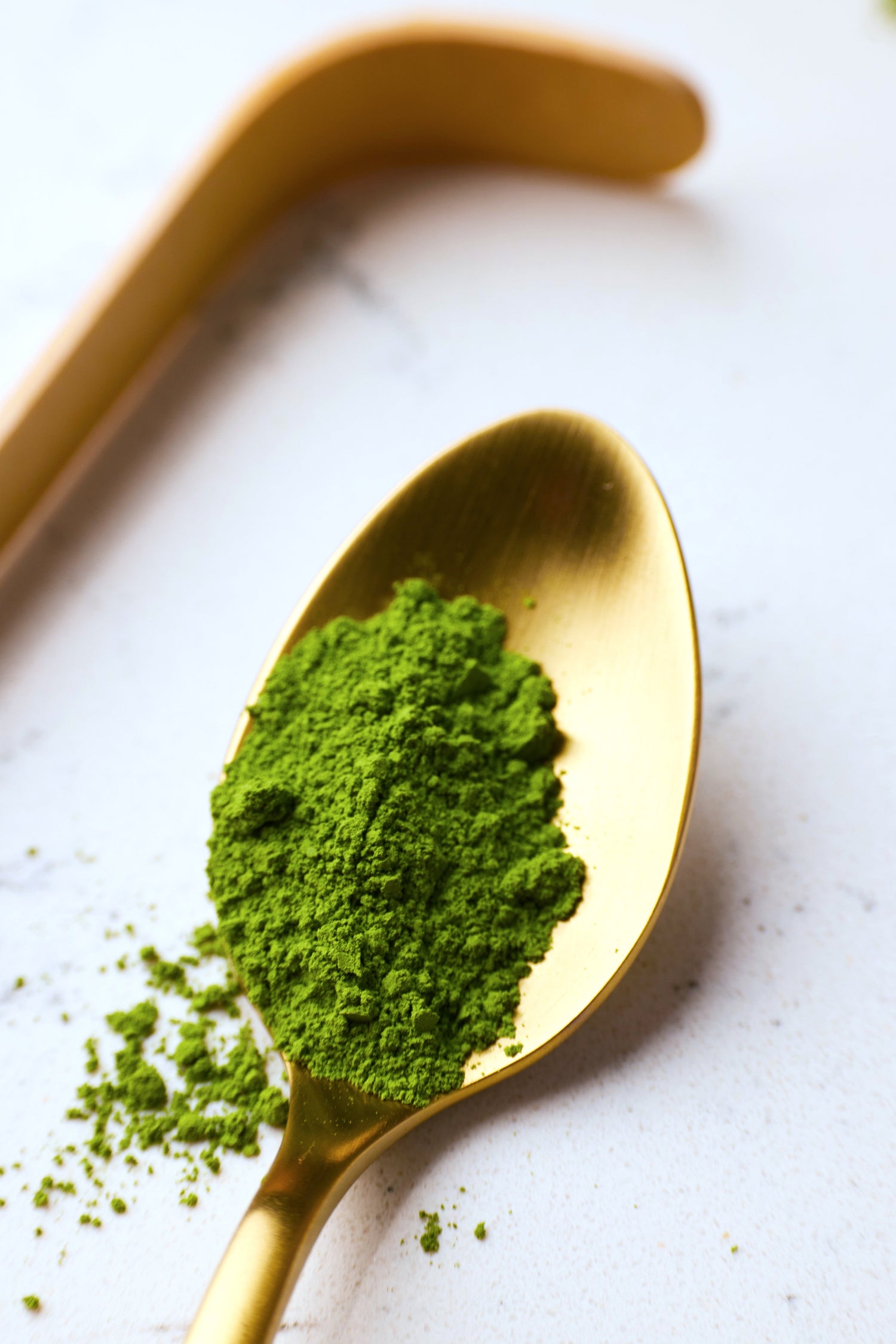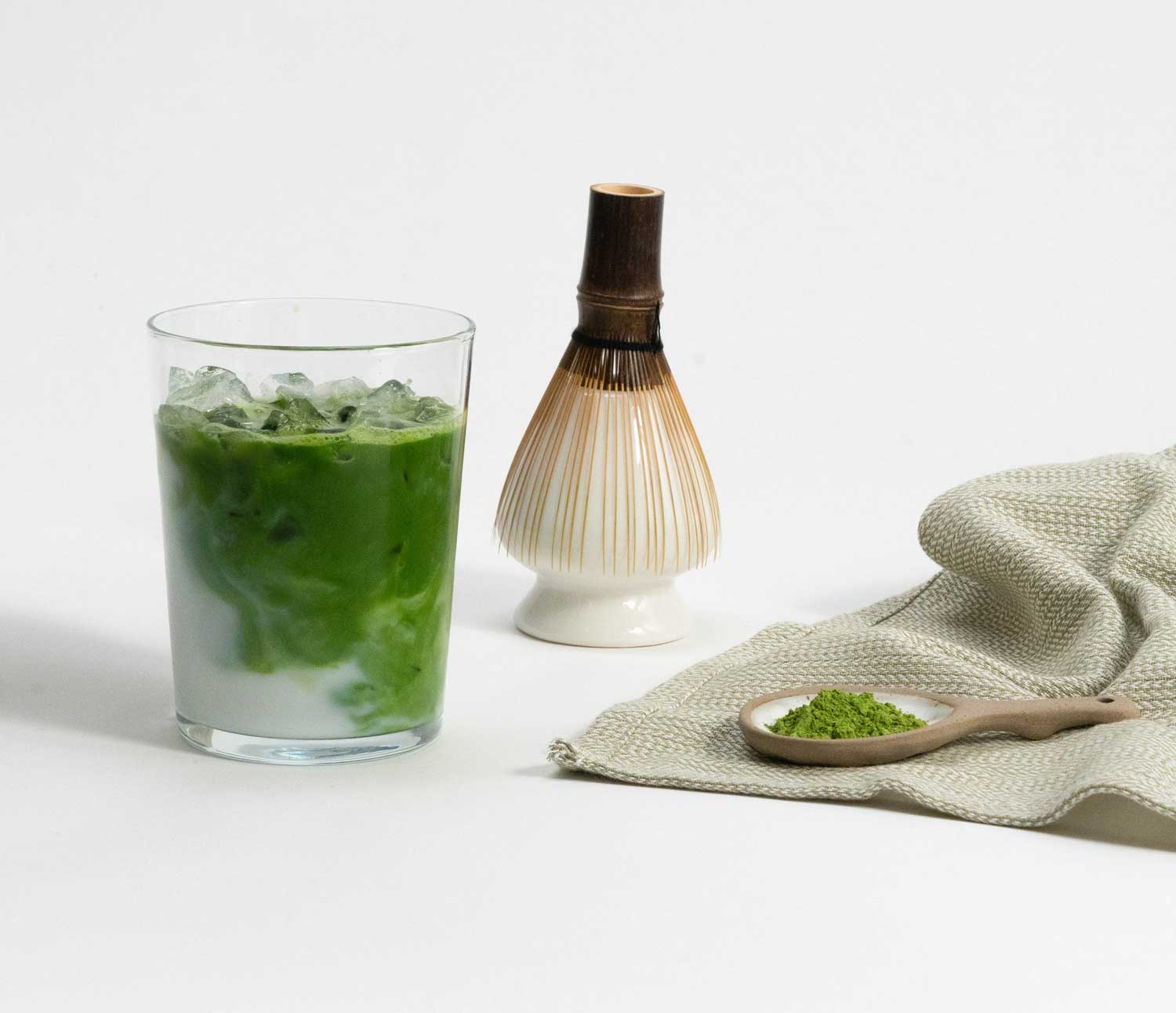Popular in Japanese culture for years, Matcha is now conquering the world. Not only because of its stunning color but also due to its strong stimulating effect. Matcha is a Japanese green tea used in the traditional tea ceremony. Found in powdered form, it has a green color that draws attention, but the highlight is its taste, an intense characteristic that one often has to get used to.
The fact that Matcha is powdered can be intimidating for some people, as the preparation is somewhat different from that of a standard tea bag.
"It is a ritual, an experience, and almost resembles a meditation, which often relaxes me, and personally, after the preparation, I can enjoy my Matcha even happier and start the day more balanced."
How do you prepare Matcha?
In Japan, there is a special kit for preparing Matcha, which consists of a ceramic bowl for Matcha called Chawan, the Chasen, a small bamboo whisk for stirring, and a bamboo spoon. It's not a big deal if you don't have all of this; it can easily be replaced with kitchen utensils like a cup, teaspoon, and milk frother.
The traditional method:
Add a small amount of Matcha powder to a small bowl and add hot water – not boiling water. It’s best to first add just a little hot water to the powder and mix it into a paste. Once the powder and water are perfectly mixed, slowly add the remaining water. Then, whisk the mixture smooth and frothy with the bamboo whisk. In this traditional method, neither milk nor sweeteners are added.
The popular Matcha Latte:
This is one of the most popular options, where the Matcha is simply prepared traditionally, as described above, and additionally, frothed milk is added. It is particularly well-suited for matcha beginners to better acclimate to the taste.
Preparation:
1 teaspoon of matcha powder
½ cup vegan milk
Optional: 1 teaspoon maple syrup
Let the milk froth.
Put some Matcha in your favorite cup. Fill 1/3 of the cup with hot water at a maximum of 80 degrees (not hotter, to preserve the nutrients). Using a whisk (chasen), stir the Matcha until it becomes creamy, the powder has dissolved, and the drink is frothy. Add maple syrup to taste and finally top up with the remaining milk.
The modern Iced Matcha:
A recipe that is simply ideal for the warmer days and provides you with the energy and nutrients you need.
Preparation:
1 cup of vegan milk (Tip: rice – coconut milk)
1-1 ½ teaspoons Matcha powder
1/3 cup water
1-3 ice cubes
A little maple syrup (optional)
Whisk Matcha and water with the Matcha whisk (Chasen) until smooth. Place the ice cubes in a glass, pour in the Matcha, and top up with the vegan milk.
Normally, when whisking Matcha with a bamboo whisk (Chasen), a fine foam forms on the surface of the drink. This foam is created by the air that is incorporated into the Matcha during whisking, and by the proteins contained in the tea that mix with the air.
"If no foam forms, this can have various reasons:"
1. Quality of Matcha: High-quality Matcha has a better ability to create foam due to its finer texture and higher concentration of proteins. Inferior qualities of Matcha may not be able to create enough foam.
2. Water quality: The water quality can also have an impact on foam formation. Ideally, the water should be soft, as hard water can affect foam formation.
3. Temperature of the water: The temperature of the water for whisking Matcha should ideally be between 70°C and 80°C. Water that is too hot can affect the taste of the Matcha and influence the formation of foam.
4. Technique for Whisking: The proper whisking of Matcha requires a specific technique. The bamboo whisk should be used in a zigzag motion to incorporate air and create foam. If the technique is not correct, it can lead to insufficient foam.
Those looking for a high-quality Matcha are in the right place. In our Shop "You can purchase our in-house brand. It not only has beautiful packaging, but it is also of top premium quality and has an organic certification, which was a heartfelt concern."





